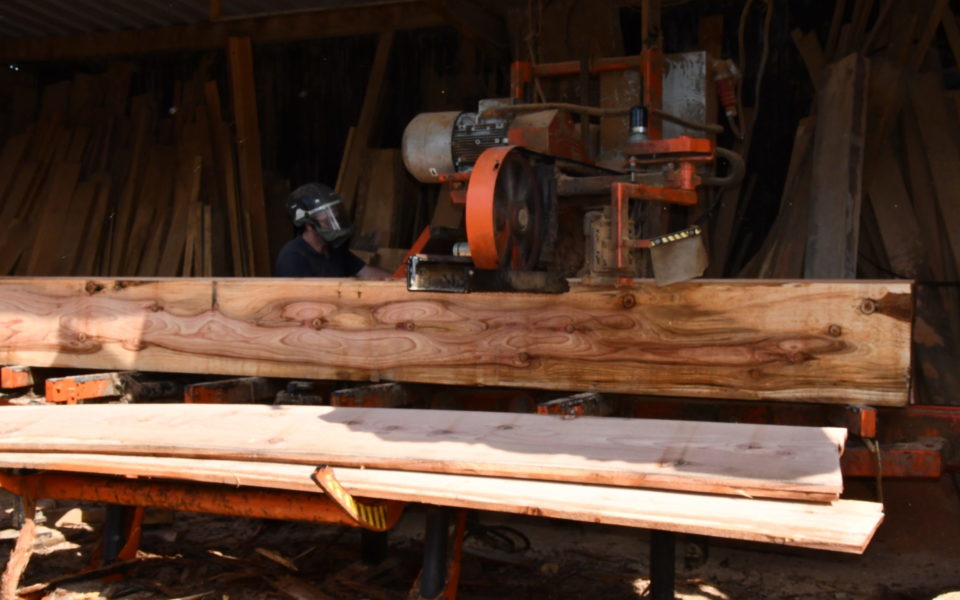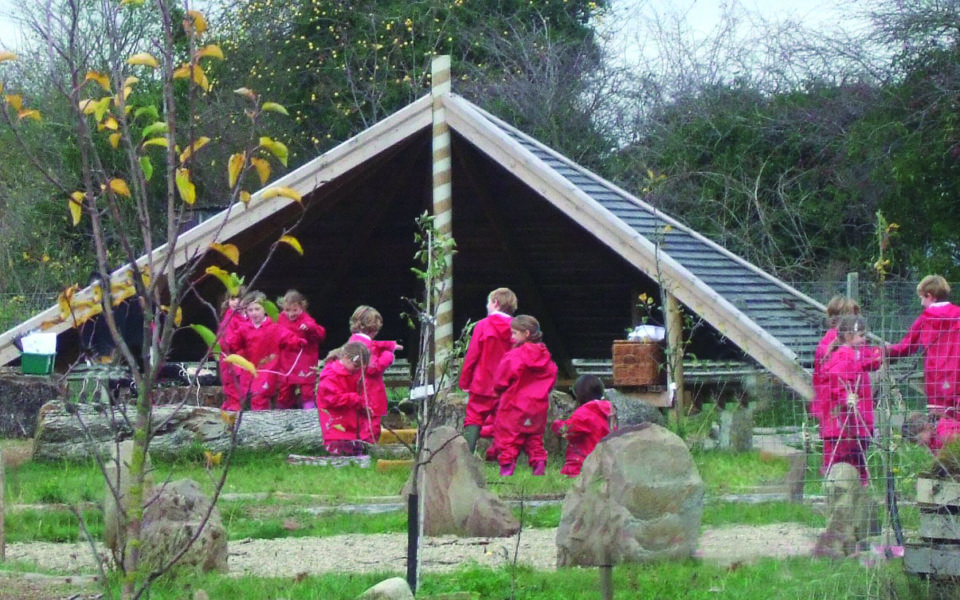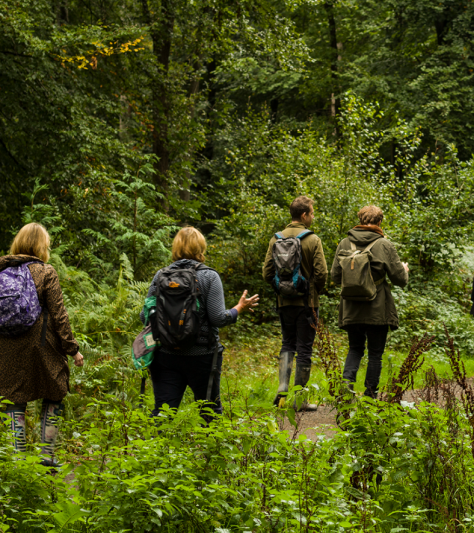Leighton Coast Redwood Thinning 2019
The Charles Ackers Redwood Grove and Naylor Pinetum at Leighton in mid Wales is owned and managed by the RFS.
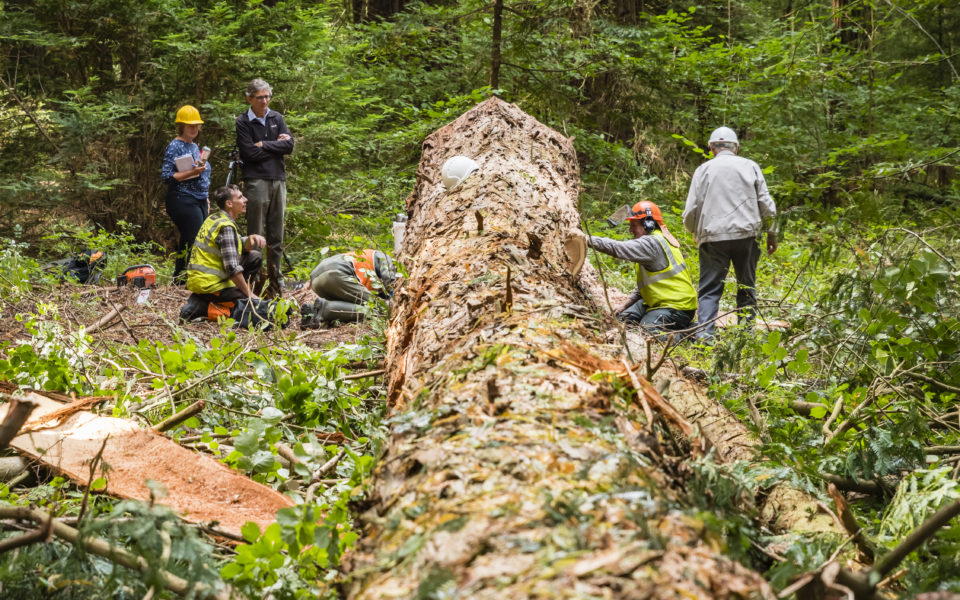
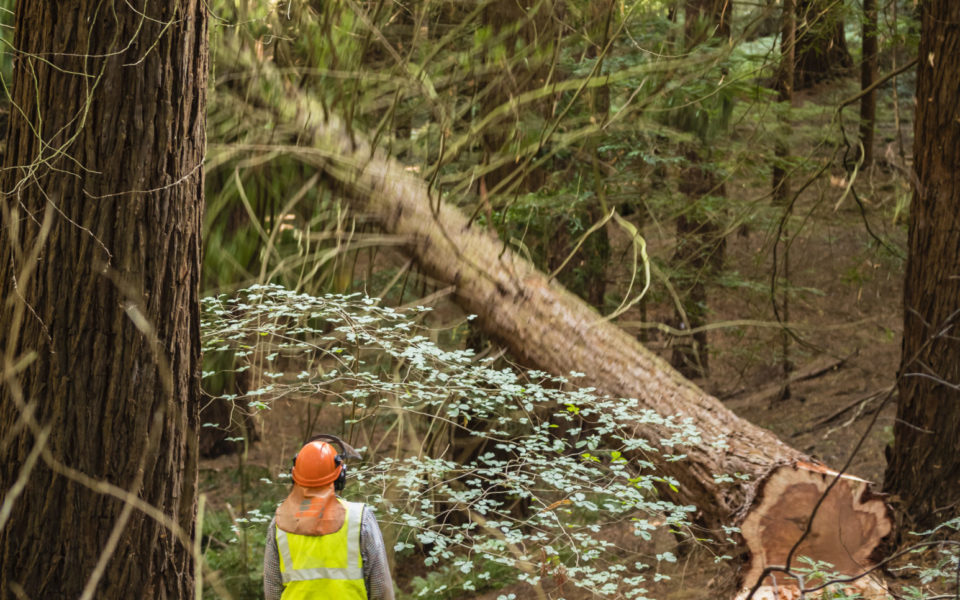
The history
The original Old Grove planted in 1857 by the rural innovator John Naylor contains some of the oldest coast redwoods (Sequoia sempervirens)in the UK.
In 1931, the respected forester Charles Ackers bought the wood and planted the surrounding 1934 coast redwood plantation. In 1958 Charles Ackers gifted the woodland to the RFSwith an agreement that the Old Grove would not be thinned. These historic trees remain magnificent but, now tightly packed together, their growth has stalled with no room to expand.
In the surrounding plantation, which has been regularly thinned, however, the trees have continued to soar upwards despite lacking the coastal fogs and sunshine they would have benefitted from in their native California. Many of these 85-year-old ‘youngsters’ are registering close on 50 metres high –around half the height of 500-year-old trees in California and continuing to grow.
Thinning 2019-2020
The plantation originally included nursery trees of larch, Douglas fir and ash, but by 1979 these had been taken out, leaving a pure plantation of coast redwood.
2019-2020 sees the seventh thinning under the management of warden David Williams assisted by Gordon Griffiths. Just over 70 trees –around 20% -are being removed, creating glades and space for the remaining 500 or so to continue to grow upwards and outwards.
Felling is being carried out with pinpoint precision by contractor Will Jones and his colleague Wayne King. Some of the trees they are taking out are now larger than any trees most UK foresters will encounter in their working life.
The largest tree so far felled had a dbh of 1.3m, a total height of 41 meters and a timber length of more than 35 meters. Its timber volume came in at 17.95m3, and it would have weighed in at nearly 40 tonnes with branches.
Coast redwoods and climate change
Redwoods are often cited as one of the non-native species which may have the potential to become a more regular feature in our UK woodland –helping build resilience against pests and disease and making them climate change adapted.
Forest Research suggests they are probably best suited to Wales and SW England in areas with more than 1250 mm rainfall and poor to medium soils.
As fast-growing trees, they may have a future role to play in flood alleviation schemes, and carbon lock up, as well as for their timber.
Timber uses
Coast redwood timber is not as structurally strong as oak, but natural tannins and chemicals make the timber naturally durable to weather as well as flame retardant and resistant to insect attack -making it ideal for external cladding.
All the timber in the 2019-2020thinning is going to a small sawmill, Upper Elms Farm Sawmill, near Worcester, where Adrian Viner, who established the sawmill with his late father, uses coast redwood himself and sells it to local builders and landscapers.
As well as milling timber into cladding boards of all dimensions –lap, straight and waver –Adrian has used it himself on a barn in place of larch slats, finding it forgiving to work with, with no splitting when put up green and with none of the loose knot problems which come with other timbers.
His clients include hobbyists who find its colour and grain ideal for creating stylish resin tables, and it can be seen used in local sheds and fences.
He has even found a market for the bark and sawdust. Its absorbency makes it perfect as an underlayer for goose bedding, and it is in demand for eco loos.
The owners of the Cob House Country Park & Mayfly Café in Wichenford, Worcestershire, built in 2010, loved the ‘wow’ factor of the cladding colour and, as a fisheries-based business, the fact that it has required no additional protective chemical treatments was a huge added bonus.
Cob House owner Helen Taylor was so impressed that the family has just had a magnificent decking area at their nearby home.
Landscape designers Leaves of Green build practical outdoor spaces for learning, play, inspiration and ecological and spiritual regeneration across the country using Leighton’s coast redwood. Owner Guy Redmond says timber structures give a focal point to many outdoor spaces. While he has also used Western red cedar and larch, he believes coast redwood has no equal for look and durability; it does not twist or shrink, absorbs water and holds profile, and does not need treating –all winning factors for him and his design and construction teams.
Seed source
It may be some time before many UK sawmills adapt to take coast redwood as a mainstream timber, but challenges are not insurmountable if demand for coast redwood does take off.
More information
Cob House Country Park: www.cobhouse.org/
Will Jones: williamjones9576@gmail.com
Leaves of Green, Landscape Architects, Design and Build Contractors: www.leavesofgreen.co.uk
Upper Elms Farm Sawmill: Adrian Viner, 07940 306005
